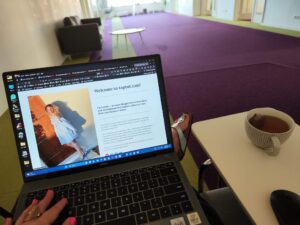Remote work offers flexibility, autonomy, and access to global talent, but it also comes with some hidden cracks that can drive your team away. If you’ve noticed rising turnover or quiet disengagement, you’re not alone.
This article will explore what leads remote team members to walk away and how you can shift your approach to keep them engaged and invested. If you’re wondering how to know if remote employees are working, a monitoring tool gives you a clear window into their day so you can support them better and make smarter calls without second-guessing.
When Remote Work Starts to Push People Out
Even your top performers can start slipping away without the right support structures. You might not see the warning signs until it’s too late.
Here’s what often leads to those quiet exits:
- Lack of Visibility & Recognition: Motivation disappears when no one sees the work. Employees start wondering if what they’re doing even matters.
- Burnout From Poor Workload Balance: With no physical boundaries between work and home, overwork becomes the norm, not the exception.
- Disconnection From Team Culture: Without regular, meaningful touchpoints, remote work can start to feel isolating and transactional.
- Unclear Expectations & Feedback: If goals shift constantly or feedback is vague, frustration builds fast, and motivation starts to disappear.
How to Keep Your Remote Team From Quitting
Keeping your remote team engaged doesn’t require reinventing the wheel. It just takes a more intentional approach to how you support, recognize, and communicate with your team.
Here’s what makes a real difference:
Normalize Recognition In Daily Routines
Build recognition into your team’s daily rhythm instead of waiting for big milestones or review cycles. Even shifting from once-a-quarter to once-a-month recognition can bump engagement by 40% and boost commitment by 25%.
Start with quick shoutouts in your team chat when someone wraps a task early, helps a teammate, or handles something tricky without being asked. Use one-on-one check-ins to highlight consistent effort, not just major milestones. In team meetings, rotate who gets spotlighted and explain why. Tie it back to values or goals so it feels meaningful.
Keep a running list of wins throughout the week so you never scramble to remember who did what. Encourage peer recognition, too, so it’s not always coming from the top.
Employee work tracking software makes this easier by showing where progress is happening in real time, helping you catch wins you might have missed.
Set Clearer Expectations With Less Noise
Break larger goals into smaller, concrete steps with specific owners and due dates. Use shared documents or dashboards so everyone sees the same information without chasing it across tools. Replace scattered messages with short, structured weekly check-ins that cover progress, blockers, and next steps.
Keep priorities visible and up to date, especially when they shift. Make sure every task has context. Explain why it matters and how it connects to the bigger picture.
Workforce tracking software supports this by showing how time is spent and whether work is aligned with priorities, giving you the clarity to adjust before things go off track.
Actively Monitor Burnout Risk
Keep burnout in check by spotting the warning signs before they escalate. Watch for extended work hours, missed breaks, or constant multitasking that leads to reduced focus. If someone’s behavior shifts, like slower replies or decreased engagement, it’s a sign to check in, not wait it out.
Model healthy boundaries yourself. Log off on time, take breaks, and avoid sending late-night messages that create pressure to stay online. Build recovery time into team schedules and normalize downtime after demanding work.
Encourage everyone to block time for deep focus and short resets, not just meetings. Create space in one-on-ones for honest conversations about energy levels and workload.
An employee tracking tool makes this easier by surfacing trends in work patterns, helping you act quickly when someone’s reaching their limit.
Build in Space For Meaningful Connection
Skip the forced fun and start meetings with a casual check-in or one-question roundup – anything from weekend highlights to current playlists. Rotate who leads these moments to keep things fresh and inclusive.
Set up low-effort, optional spaces like shared chat threads for non-work topics or casual drop-in calls for those who want to connect outside of project updates. Celebrate milestones like birthdays or work anniversaries with a quick mention. Focus on consistency, not formality.
A monitoring tool like Insightful (ex Workpuls) helps by freeing up time normally spent chasing updates, giving you more room to invest in connection without losing track of work.
Makes Retention Easier With Smart Tools
You can’t fix what you can’t see. That’s where a monitoring tool becomes a real asset. It gives you reliable insight into how your team works – not to micromanage, but to support. With better visibility, you can lead with facts, not assumptions.
Here’s how the right tool can help you retain your remote team:
- Spot Early Signs of Disengagement: Track drops in activity or sudden shifts in behavior that might signal an issue before it turns into a resignation.
- Balance Workloads More Effectively: See who’s overloaded and who has room to grow. Use that data to reassign tasks and reduce burnout risk.
- Coach With Clarity: Give better feedback based on trends and time data instead of vague impressions.
- Celebrate What’s Working: Use the tool to spot productive patterns and highlight what’s working so others can learn from it and stay motivated.
Conclusion
The strategies you use every day, such as clear expectations, personal connection, and meaningful recognition, make all the difference. A monitoring tool supports that approach with the data to guide your decisions and the visibility to step in when it matters most.
With the right setup, you create a remote experience worth staying for.

Lorelei has been an online entrepreneur, marketer and writer since 2006. Her biggest passion is WordPress, which is why she switched to being a full-time blogger 20 years ago and hasn’t looked back since. With so many years of experience behind her, she is an expert in copywriting, SEO, marketing and business strategies.






